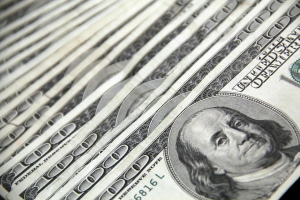On 5 November 2024, Americans delivered a final mandate to former President Donald Trump and the Republican Party (also known as the “Grand Old Party” or GOP), by re-electing him to office, in a stunning socio-political move.
The President-elect won against incumbent US Vice President Kamala Harris, a Democrat, by a large majority, becoming the 47th US President. The rising inflation and the Americans’ distrust in the ability of the Biden administration to restructure the economy fueled the nation’s choice.
His pledge to “Make America Great Again” and “fix the economy” was likened by analysts to international financier Scott Bessent’s economic plan, which recontextualises the “three arrows” principle of Abenomics – the economic policies enacted by Japanese Prime Minister Shinzo Abe when he won a second term in office.
Based on this underlying idea, Trump’s rules – also known as “Trumponomics 2.0” – rely on the following key mandates:
- 3% economic growth
- Reduce the deficit to 3% of GDP
- Increase oil production by a marginal 3 million barrels per day
These prerogatives address both the economic fears of Americans who voted for Trump and are or could be the nation’s one-way ticket to growth. However, the results will only begin to show after the first hundred days, once Trump is sworn into office. But what are its immediate or longer-term implications for the financial markets?
The “Trump effect”
Economists and investors are bracing themselves for potential shockwaves across the financial markets. In the week following Trump’s victory announcement, several markets have experienced massive volatility. Among these, currencies, particularly the US dollar, equities, gold, oil, and cryptocurrencies were the most sensitive to the “Trump effect.” Let’s take a look!
The greenback & US indices
The US dollar surged as uncertainty about Trump’s re-appointment to office, rallying against its major counterparts. The US dollar index (DXY) soared to 105.30 on the news.
Among the USD-based pairs, EURUSD and USDJPY are perhaps some of the most representative of the greenback’s performance. During the early American session on Wednesday, 6 November, the EURUSD pair fell into negative territory near 1.0700.
Comparatively, USDJPY surged to 154.40 as the Republican Party also gained dominance over the Senate, eliminating any competition from the Democrats.
The US dollar’s rally rippled through to the equity markets, driving US indices to new highs. The S&P 500 gained 1.2%, while tech-heavy NASDAQ 100 climbed 1.4%.
Cryptos skyrocket
Bitcoin skyrocketed to $75,000, marking a new record high amid a prevailing risk-on mood. The main cryptocurrency continued its upward movement to peak above a historic $98,000, in a wild bull rally that saw the main cryptocurrency extend its 7-day winning streak.
Bitcoin’s contender, Ethereum, also climbed 10% on election news, while Dogecoin, Elon Musk’s favourite, spiked more than 150% as Trump put forward the idea of creating a Government Efficiency Department of which Tesla’s CEO will play an important part.
On one hand, analysts link the crypto market’s wild bull run to the President-elect’s statements about looming regulatory changes favouring cryptocurrencies in the US. On the other hand, economists observed that such record price spikes of Bitcoin occur every four years, coinciding with two major events – Bitcoin halving and the US election cycle.
The first time that Bitcoin surprised Wall Street was in 2012 when Obama won the race to the White House and the main crypto rose by 86%. When Trump won his first term in 2016, Bitcoin gained 44% in value to pick in 2020 once Biden took power, ratcheting up by 145%.
Oil and gold retreat
Oil had a mixed performance marked by a slow price rise before turning negative in the area of $71.89 as Trump’s deregulation approach and tariff policy raised concerns about increased oil supply.
As the dust settles…
As traders digest Trump’s comeback to the White House, the markets seem to have eased their upward movement. The US Dollar Index (DXY) retreated slightly on Friday after hitting yearly highs at 106.60, in reaction to Fed Chair Powell’s uncertainty about a potential interest rate cut in December.
However, the greenback is still at an advantage over its peers, with EURUSD ending the week in bullish territory. The JPY gained some traction against the USD, which pulled back slightly, driving the pair higher at 154.29.
Gold price dipped below $2,570, in a weekly decline of over 4%, while WTI crude oil remained steady around $68.40 – $68.50 amid renewed demand for the US dollar.
As stocks pared back any election-fuelled gains, the Dow Jones Industrial Average (DJIA) index lost 300 points on Friday.
In a similar move, Bitcoin pulled back from its record highs, retreating near $86,000. Analysts suggest, however, that Bitcoin’s bull run may not have run its course just yet and there may still be room for the main cryptocurrency to reach $100,000. It remains to be seen.
Meanwhile, how will you take advantage of these opportunities? TibiGlobe offers plenty of resources and risk management tools to equip traders with the right arsenal to navigate the challenges and opportunities that Trumponomics 2.0 brings about. Get started today!
Don’t forget to keep an eye on TibiGlobe’s Blog for fresh trading insights and follow us on Threads, X, Instagram, Facebook, and LinkedIn.
Risk Disclaimer:
CFDs are complex instruments and come with a high risk of losing money rapidly due to leverage. You should consider whether you understand how CFDs work and whether you can afford to take the high risk of losing your money. Prices can fluctuate rapidly, and past performance is not indicative of future results. Please refer to the full risk disclaimer on our website.
The information provided does not constitute financial advice and should not be relied upon as such. You should seek independent advice before making any investment decision.








